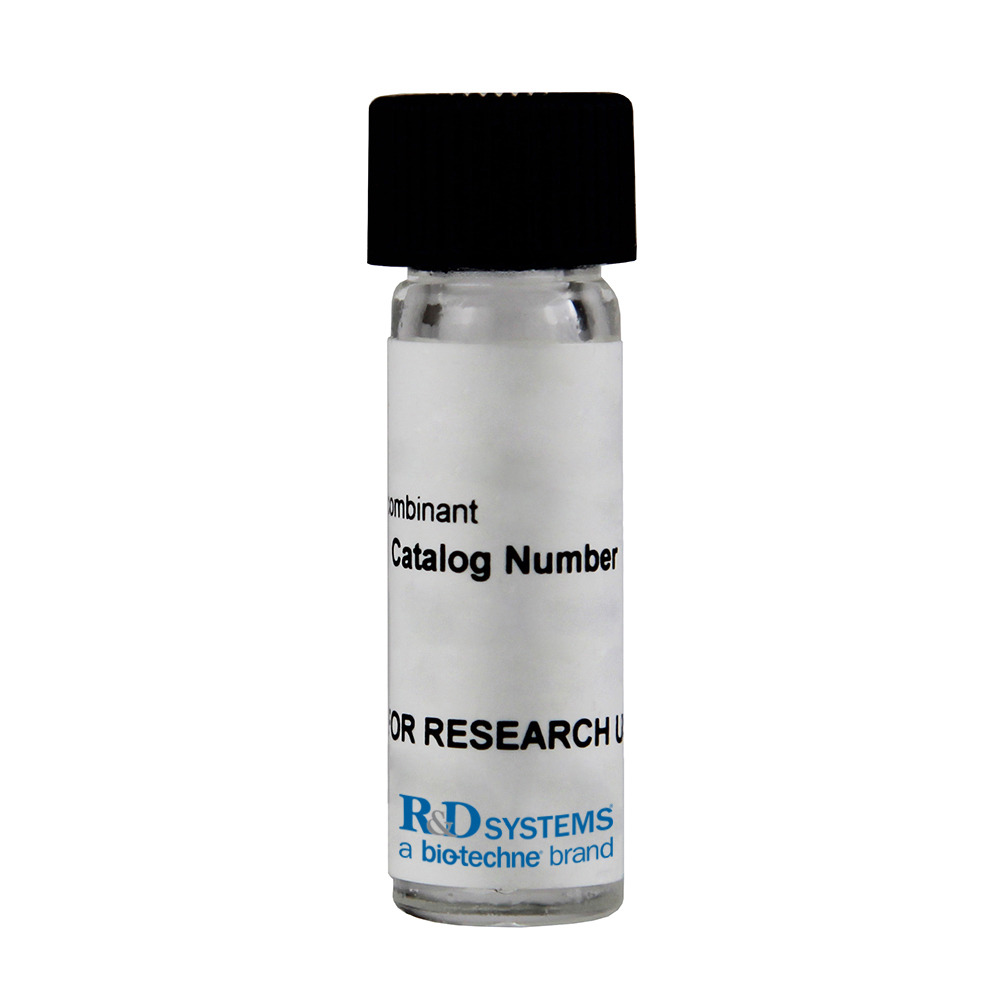Recombinant C. difficile Toxin A/TcdA Protein, CF
R&D Systems, part of Bio-Techne | Catalog # 8619-GT

Key Product Details
Source
E. coli
Accession #
Conjugate
Unconjugated
Applications
Enzyme Activity
Product Specifications
Source
E. coli-derived c. difficile Toxin A/TcdA protein
| msyB (Thr2-Arg124) Accession # P25738 |
GSENLYFQGH | C. difficile TcdA (Met1-Leu542, Arg184Asn) Accession # P16154 |
HHHHHH |
| N-terminus | C-terminus | ||
Purity
>90%, by SDS-PAGE visualized with Silver Staining and quantitative densitometry by Coomassie® Blue Staining.
Endotoxin Level
<1.0 EU per 1 μg of the protein by the LAL method.
N-terminal Sequence Analysis
Thr2 (msyB)
Predicted Molecular Mass
79 kDa
SDS-PAGE
78 kDa, reducing conditions
Activity
Measured by its ability to hydrolyze UDP-Glucose.
The specific activity is >15 pmol/min/μg, as measured under the described conditions.
The specific activity is >15 pmol/min/μg, as measured under the described conditions.
Formulation, Preparation and Storage
8619-GT
| Formulation | Supplied as a 0.2 μm filtered solution in Tris, NaCl and Glycerol. |
| Shipping | The product is shipped with polar packs. Upon receipt, store it immediately at the temperature recommended below. |
| Stability & Storage | Use a manual defrost freezer and avoid repeated freeze-thaw cycles.
|
Background: Toxin A/TcdA
5-fold greater than that of TcdA.
References
- Wilkins, T.D. and Lyerly, D.M. (2003) J. Clin. Microbiol 41:53.
- Kyne, L. et al. (2002) Clin. Infect. Dis. 34:346.
- Voth, D.E. and Ballard, J.D. (2005) Clin. Microbiol. Rev. 18:247.
- Chaves-Olarte, E. et al. (1996) J. Biol. Chem. 271:6925.
- Just I, et al. (1995) J. Biol. Chem. 270:13932.
- Hammond, G.A. and Johnson, J.L. (1995) Microb. Pathog. 19:203.
- Ciesla, W.P. Jr. and Bobak, D.A. (1998) J. Biol. Chem. 273:16021.
Alternate Names
ToxA, Toxin A
Entrez Gene IDs
8470358 (C. difficile)
Gene Symbol
TCDA
UniProt
Additional Toxin A/TcdA Products
Product Documents for Recombinant C. difficile Toxin A/TcdA Protein, CF
Product Specific Notices for Recombinant C. difficile Toxin A/TcdA Protein, CF
For research use only
